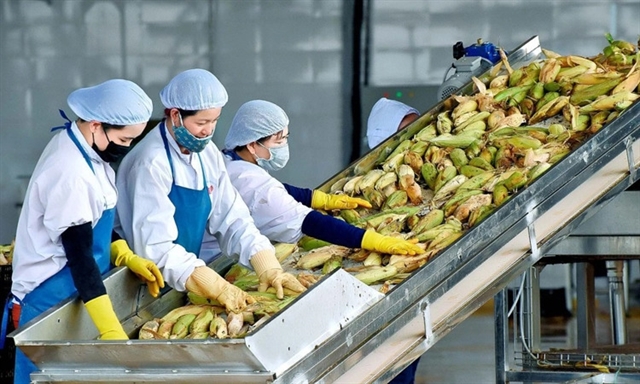Fruit and vegetable exports in May reached an estimated US$496 million, marking the fifth consecutive month of decline in turnover.

HÀ NỘI — Việt Nam’s fruit and vegetable exports in May reached an estimated US$496 million, down 35.5 per cent year-on-year, according to the General Department of Customs.
This marks the fifth consecutive month of decline.
In the first four months of this year, China imported $777 million worth of Vietnamese fruits and vegetables, a 33 per cent drop compared to the same period last year.
Other major markets, including South Korea and Thailand, also saw export decreases of 5 per cent and 3 per cent, respectively.
"The ups and downs of fruit and vegetable exports to China largely depend on our key product, which is durian," General Secretary of the Việt Nam Fruit and Vegetable Association (VINAFRUIT) Đặng Phúc Nguyên said.
However, since the beginning of the year, durian exports have faced increasing difficulties. China has tightened its inspections, imposing 100 per cent checks on Auramine O and cadmium residues in durian shipments from Việt Nam.
These stricter controls have caused serious delays at border gates, with clearance times stretching from seven to eight days.
Exports of other fruits such as dragon fruit, bananas and jackfruit to China have also dropped significantly. Nguyên explained that in May, China begins its domestic harvest season, increasing local supply.
Cambodia, Laos and several South American countries have also ramped up fruit exports, intensifying competition for Vietnamese produce.
In response to this situation, Minister of Agriculture and Environment Đỗ Đức Duy has instructed relevant agencies to coordinate with Chinese customs and authorities to remove technical barriers. Priority will be given to the issuance of planting area codes, approval of packaging facilities and streamlining testing procedures, particularly for durian.
In the long term, the sector will undergo a sustainable restructuring. The focus will be on improving the legal framework, standardising planting area codes and investing in deep processing technologies such as frozen durian, to add value and reduce reliance on fresh fruit exports.
China has recently approved an additional 829 planting area codes and 131 packaging facility codes for Vietnamese durian, according to the Plant Protection Department under the Ministry of Agriculture and Environment.
This follows the submission of dossiers for 1,604 planting areas and 314 packaging facilities to the General Administration of Customs of China.
With the new approvals, Việt Nam now has a total of 1,469 planting areas and 188 packaging facilities eligible to export durian to China.
On May 23, Prime Minister Phạm Minh Chính directed four ministries to urgently co-ordinate and unify customs clearance procedures for durian exports to China, while strictly cracking down on fraudulent use of planting area codes.
The Ministry of Agriculture and Environment will work with the Ministry of Industry and Trade to boost the domestic market and negotiate access to new export markets for Vietnamese durians.
Nguyên believes that with appropriate and fundamental measures from the Government, durian export turnover will recover, helping to revitalise the broader fruit and vegetable industry in the near future. — BIZHUB/VNS





